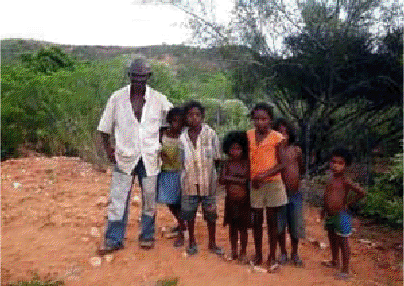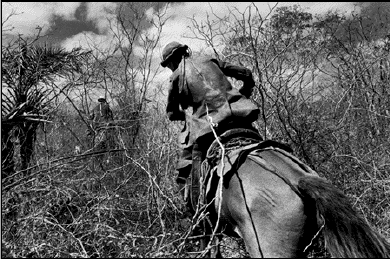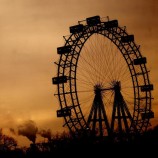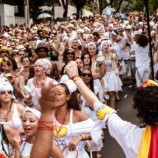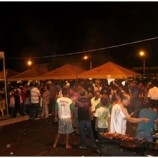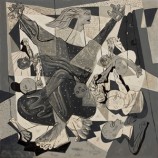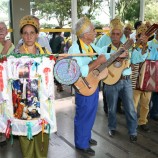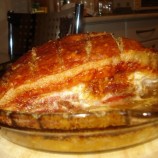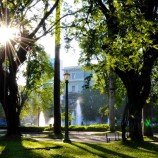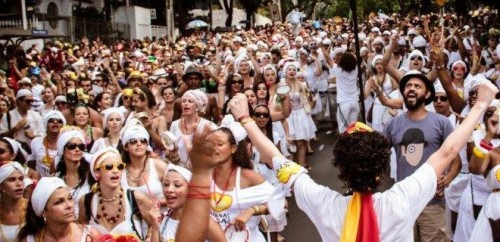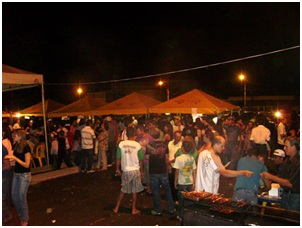In the year of 1974, I had the opportunity to work for the construction of the
Moxotó Dam on the São Francisco River, which was part of the Paulo Afonso
hydroelectric complex located on the state borders of Bahia, Pernambuco and
Alagoas, in Northeast Brazil. In the municipal of Paulo Afonso, which borders
the famous region of Raso da Catarina, few people were familiar with the
theme and fewer still knew the building location. Part of the region was recently
recognized as a Biological Reserve and later became the Raso da Catarina
Ecological Station.
Derenzi, our superintendent, was an engineer by profession but a philosopher
by nature. He gave greater value to the ecological aspects and the more
significant geographical knowledge, especially if it were a novelty. In one of his
outings to the city, beyond the walls of the Hydroelectric Power Plant of São
Francisco, CHESF, Derenzi met Sebastião Eleutério, a small hotel owner who
revealed that he had some friends who lived in an isolated and remote area of
Raso da Catarina.
From that day on, Derenzi instructed me to research the subject. I got mostly
oral information, most of them from imagination and legend, some were quite
creative. Most of them were narrated stories of the heroic skirmishes that
Lampião, Brazil’s largest Cangaceiro (folk heroes and vigilante bandits), and
his men or “cabras” (goats), applied to the “macacos” (monkeys) which is
what they called the police soldiers around the early 1920’s. The “volantes”,
mobile combat police detachments from neighboring states, would arrive at
the outskirts of the fearsome caatinga (dry forests) only to make a timely and
frightened retreat.
I would eagerly listen to, for example, the driver Antonio Carneiro, known as
Carneirinho, tell of the time when he belonged to the band of Virgulino Ferreira
da Silva, the Lampião. I could tell that it was all fruit of his zealous mind to have
once been part of some of that.
From the little that I found out, I related to my boss that there was no water in
the region, but only a parasitic weed that could provide up to two liters of cold
water for the brave who dared to cross and advance on the caatinga from the
inside. All the folklore surrounding Lampião was aggregated to the subject
matter. It was even said that Lampião was considered to be a sorcerer for
having such pure and cold water in that inhospitable region.
Derenzi did not rest until the day that this Sebastião Eleutério promised to take
us to his friend’s house at the entrance point to this fascinating region, after
having to overcome approximately 60 miles of dirt road of the worst quality,
solemnly unknown by the local, state and federal authorities.
Our superintendent looked more like a kid while he prepared for the much
dreamed of trip. With everything in order, he summoned his trusted mechanic,
head of the workshop, the freckle faced Mario Soro to be our driver and travel
companion. Our informants spoke of the existence of wild boars and specially
the small and valiant “tiririca”, capable of putting many good hunters on the run
who dared to penetrate the area. This left our peaceful engineer even more
excited. Subsequently, as he was already fond of firearms, he inadvertently
turned into a daring hunter. He wanted to eat fresh boar meat and would even
bring a nice fat “tiririca” to the “cumadre”, which is what they called their maid, to
bake at home.
The trip looked like child’s play. First, all the recommendations and precautions.
Then, the strategies and tactics for stalking pigs that rose dust clouds when
they moved in the middle of the bush, due to the herd size. The conversation
was never ending in the comfortable, newly reformed and painted Chevrolet
Veraneio as it continued to get scratched relentlessly by the offensive
vegetation of the Bahian great backlands.
The eccentricities began when we arrived at the home of Sebastião’s friends
and he sent for the master of the house and one of his sons to guide us in our
big adventure. Our first surprise was the morning “coffee”: a drink made of
roasted rice, but by its color looked more like tasteless chocolate. In return, we
offered our remaining cans of beer and, most importantly, the water that was
gathered by the melting ice inside of our styrofoam box, which turned out to
be a great gift. The only thing we were interested in was to start the day that
promised to be the most startling of our stay in the region.
There was only one horse which was clearly meant for me. I thanked and
firmly said that I would pull the animal in case of any eventualities, but would
not mount it. And I stuck to my word. The biggest recommendation was that
we should stick together. The vegetation is an awesome thing: it is all totally
identical. That’s why the “volantes” say, “Do not risk going in that immense and
hostile caatinga”.
When the sun came up we had already walked two or three kilometers. From
time to time our guides showed us the pigs’ tracks, the hoofs were certainly of
the caititus which my boss insisted on calling wild boars. The almost solemn
moment that brought the whole group together was when they found the much
sought after parasitic herb that allowed us to fill a container that was previously
included in our paraphernalia precisely for this purpose. Everyone wanted to
drink a sip just to make sure that the water was cold. To dispose of the residues
or “purée” from the roots, the water was strained…. through the local resident’s
t-shirt. No kidding!
After a lot of walking and no rest stops, also because we were keeping a
peaceful and easy pace, we caught sight of an old hovel in the middle of the
caatinga. The villagers were acquaintances of our companions despite their
seldom contact. Fathers and sons alike came out of their humble dwellings to
welcome us with their customary greetings and proved to be pleased with our
presence. We had nothing to offer so I, wearing a long-sleeved shirt over a t-
shirt, used the heat as an excuse to leave “as a present” a good dress shirt for
them. They made a point of us having lunch with them, since they had killed a
wild pig the day before and it would be an opportunity for us to finally taste the
much imagined meat.
This lunch deserves a bit more attention to detail. They served a reddish liquid
in a ferrous metal cup that looked like pink lemonade. My boss showed the
widest mouth to the juice until he realized that it was water from the barreirinho,
a kind of mini dam that accumulates rain water, sparsely consumed throughout
the rest of the year, the mud clay explaining its reddish tint. Plus, the mugs
were homemade, one for every two of us there. As for me, I was left to drink
the water together with the son of the first host who was also our travel guide.
Derenzi was given the “honor” to drink with the owner of the hovel, whom he
always referred to as “old toothless” in a harmless joke about the shanty town
owner’s oral state. To complement the food, there was only a few pieces of lean
pork meat, a plate of couscous and goat’s milk. And once again, the deep dish
was for everyone there who took turns using the few existing spoons.
It is worth noting the presence of the Raso da Catarina Ecological Station,
which is located between the rivers San Francisco and Vaza-Barris. It is located
in the driest region of Bahia State, with a maximum rainfall 600 mm per year.
Administered by the Brazilian Environmental Ministry, IBAMA, it is 60 miles
from Paulo Afonso, in an area with difficult access routes. It occupies an area of
105,282 hectares with a regional semi-arid climate. The vegetation is composed
of caatinga vegetation. The region is full of stories: it was once the scene of the
Canudos Peasant Rebellion and, due to its especially difficult access, was the
ideal hideout for the cangaceiros.
The goal of this station is to protect the ecosystem and enable the development
of scientific research of its fauna and flora. The fauna is diverse and is home
of the blue lear macaw, considered the most endangered species in the world,
as well as other birds and mammals such as brocket deers and jaguars. The
vegetation is the caatinga vegetation, with plenty of cactuses, chiquichiques and
several types of bromeliads.
It is administered by the Chico Mendes Institute for Biodiversity Conservation
(ICMBio). Access is restricted to educational and scientific purposes, depending
on prior authorization. The name Catarina is a tribute to a former resident
and local leader. The name Raso is derived from its plain tableland, which is
indented by ravines and canyons. The periphery on the plateau, especially in
the southern and western portions, underwent intense erosion facilitated by the
nature of its sandy sediments.
Never shall we forget that fabulous day. Whenever the subject happens to
be pertinent, there we were, Derenzi and I, the two of us doing envy to our
listeners. For me it was, and still is great to tell this tasty and epic adventure. I
even snob a little in the face of young ecology students when I relate this case
and always pepper it up a little to further draw in my audience. But for those
who know me, I can guarantee that it’s all true!
Related Articles




